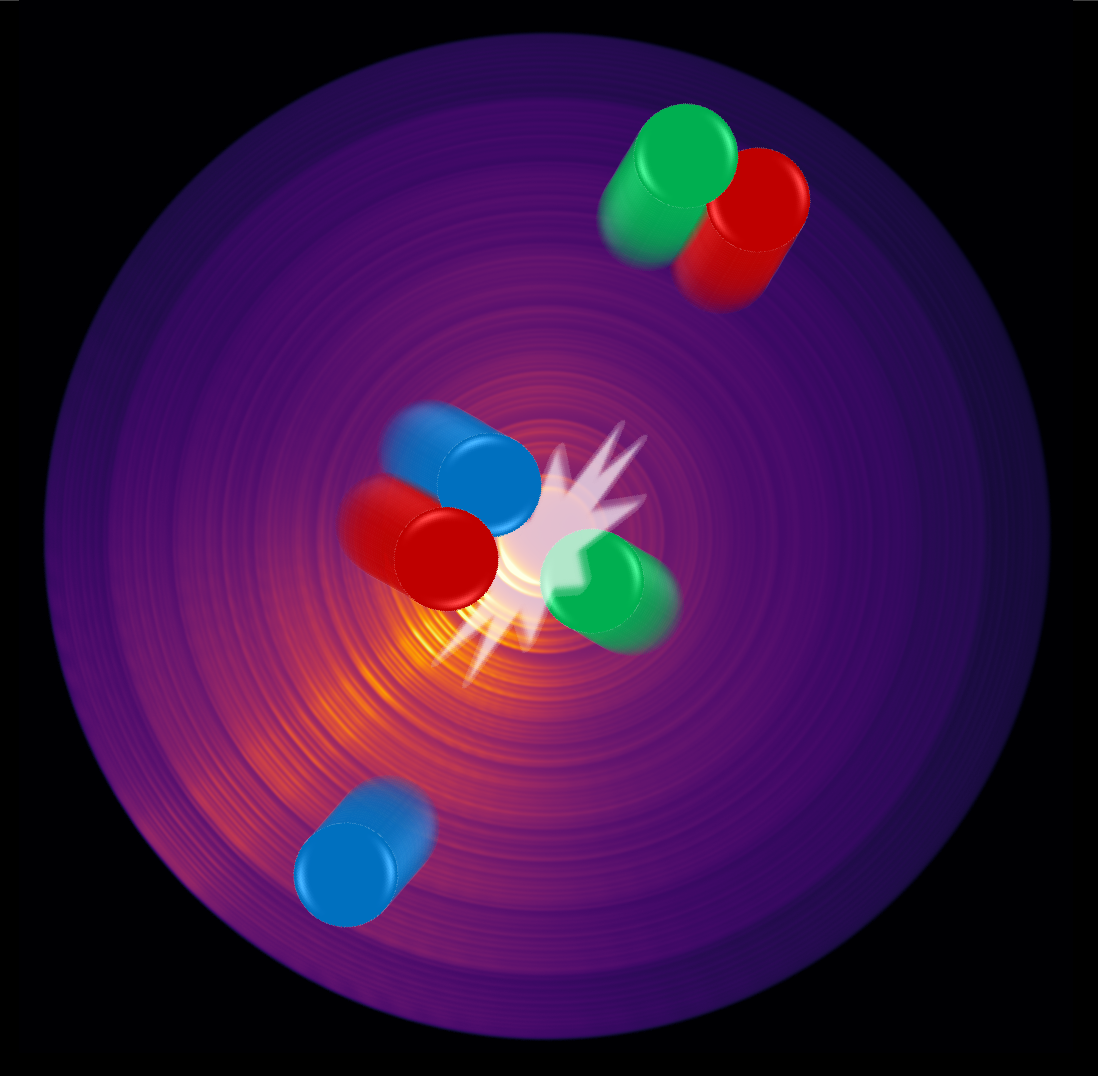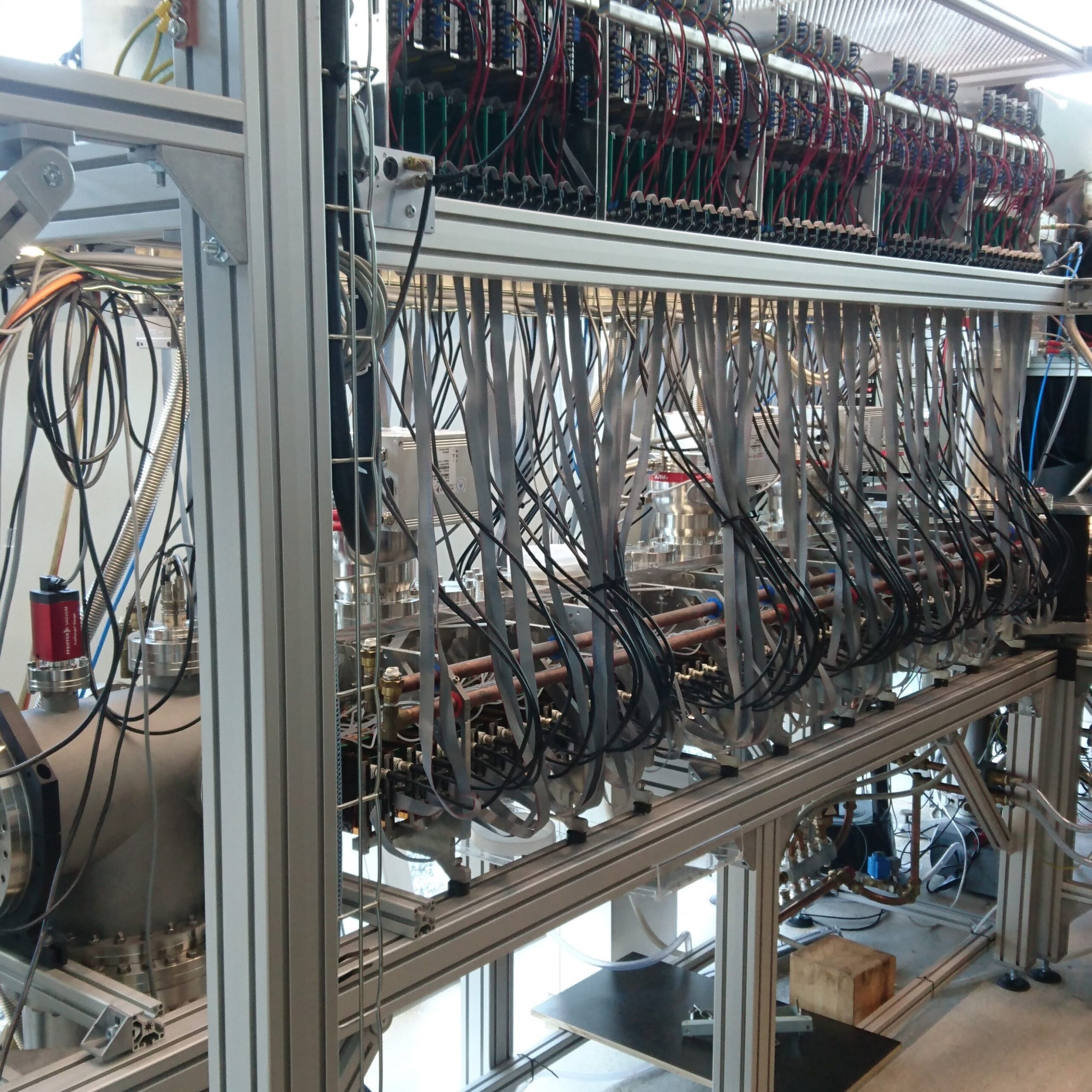One of the important goals in physical chemistry is to get a complete understanding of fundamental molecular processes that underlie chemistry. Our aim is to investigate and control molecular scattering processes in extremely high detail and in unexplored energy regimes.
We let individual molecules and atoms collide under controlled conditions in a crossed molecular beam machine. We use a world-unique Zeeman decelerator1, which uses time-varying magnetic fields to fully control and manipulate the velocity and quantum state of a reactant before the collision. After the collision, we measure the reaction products using advanced detection methods involving lasers and velocity map imaging. The powerful combination of well-controlled reactants and high-resolution imaging of the products allows us to study molecular collisions with extraordinary resolution, revealing intimate details of the collision process that are washed out otherwise.
Up to now, this experimental approach has only been used to investigate inelastic molecular collisions, for instance between carbon and helium atoms2. Our aim is to for the first time use our approach to study reactive collisions. This will allow us to investigate fundamental chemical reactions on the molecular level in great detail. We aim to measure the energy dependence of state-to-state differential cross sections in order to provide an extremely sensitive test for potential energy surfaces and scattering calculations used to describe the reaction dynamics.
Ultimately, we would like to not only better understand, but also control chemical reactions, which is a long-held dream of physical chemists. When we have control over a reaction, we can for instance suppress unwanted reaction products or synthesize new structures or materials.

Controlling the reactants
We use crossed molecular beams to investigate reactions between individual molecules and atoms in the gas phase. One of the bottlenecks for the experimental resolution is the quality of the molecular beam pulses used to generate the reactants. We use a Zeeman decelerator to manipulate the motion of magnetic species using the force they experience in a magnetic field.
Our multistage Zeeman decelerator1 consists of an alternating array of pulsed solenoids and permanent magnetic hexapoles and is optimized for crossed beam scattering experiments. By switching the individual solenoids on and off at specific timings, the velocity of an atom or molecule in a low-field seeking quantum state can be manipulated. The decelerator produces a packet of magnetic molecules or atoms with a computer-controlled tuneable velocity, narrow velocity and spatial spreads, and a high quantum-state purity. This beam is ideally suited for scattering experiments.
We recently showed that we can produce an intense and controlled beam of electronically excited sulfur atoms3.
High-resolution imaging of the products
After the reaction, the velocity vectors of the reaction products are detected state-selectively using a combination of resonance-enhanced multiphoton ionization (REMPI) and velocity map imaging (VMI). We can measure scattering images that directly reflect the state-resolved differential cross sections of the scattering process.



Virtual lab tour
You can find a virtual lab tour of the Spectroscopy of Cold Molecules department, including our lab, here.
- T. Cremers, N. Janssen, E. Sweers, and S.Y.T. van de Meerakker, Design and construction of a multistage Zeeman decelerator for crossed molecular beams scattering experiments, Rev. Sci. Instrum. 90, 013104 (2019).
- V. Plomp, X.-D. Wang, F. Lique, J. Kłos, J. Onvlee, S.Y.T. van de Meerakker, High-Resolution Imaging of C + He Collisions using Zeeman Deceleration and Vacuum-Ultraviolet Detection, J. Phys. Chem. Lett. 12, 12210 (2021).
- A. Tsoukala, S. Bruil, N. Janssen, S. Pieters, J. Onvlee, Intense and controlled beam of S(1D2) atoms, Phys. Rev. A 112, 053113 (2025).
Funding



Funded by the European Union. Views and opinions expressed are however those of the author(s) only and do not necessarily reflect those of the European Union or the European Research Council Executive Agency. Neither the European Union nor the granting authority can be held responsible for them.